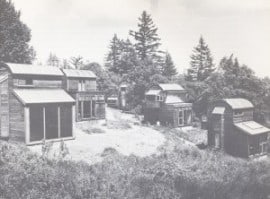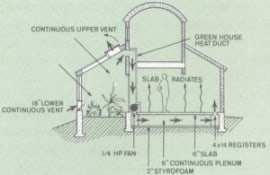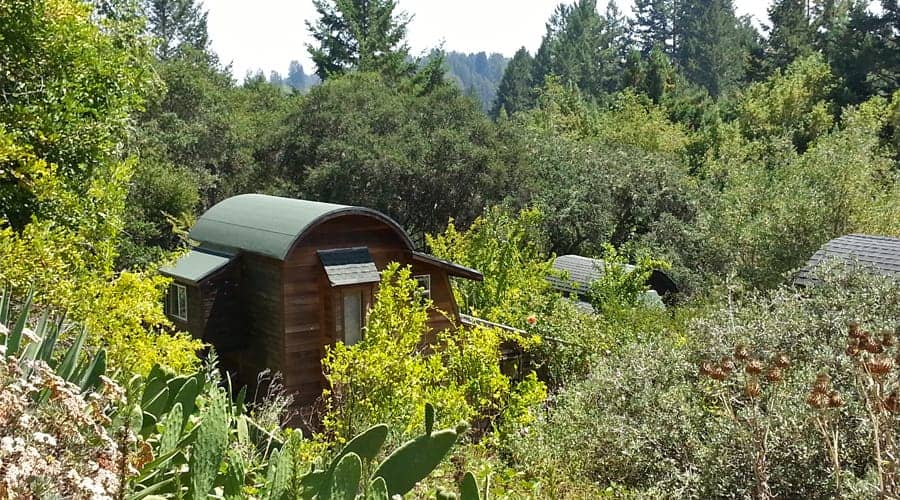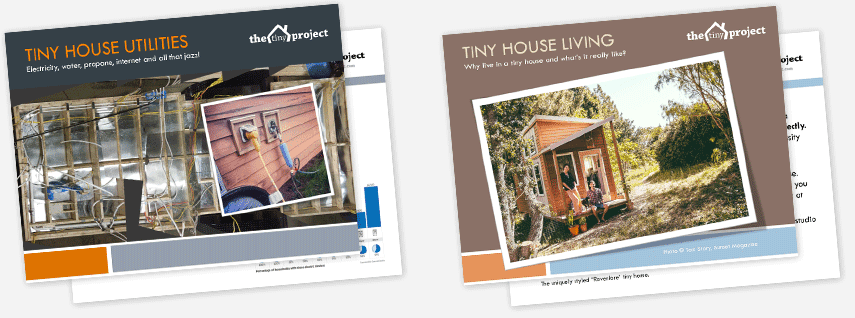Tiny House Find: Occidental Arts & Ecology Center (OAEC)
Recently I had the pleasure of attending a 2-week Permaculture Design Course (PDC) at OAEC. This course has been offered at OAEC since 1994 and is the longest continually-offered permaculture design course in California. We had some amazing instructors, and learned more than could possibly be squeezed in our heads (and hands) over those 2 weeks. I highly recommend it! For those of you who don't know, here's one way to define permaculture:
Permaculture and Ecological Design are systematic approaches to human settlement that are rooted in the ethics of caring for the Earth and human communities. Farmers, gardeners, land managers, landscapers, home or land owners, builders, educators, or activists all benefit from this way of thinking, which is inspired by observing natural patterns.
I see permaculture as a design methodology for all areas of our lives to create highly efficient, sustainable and regenerative systems that work with and within natural systems -- healing the earth and making best use of her resources, while living with beauty and abundance!
Aside from this great learning opportunity, another thing I discovered at OAEC was a slew of tiny houses, cabins, and other small structures. Before becoming the OAEC, the land was previously owned by the Farallones Institute, and some small passive solar building experiments were done there starting in the 70s (with government grant money!). These dwellings still remain in some form or another, and many more (on and off-grid) have been added over the years as housing for OAEC staff members.
It's difficult to see any detail from the above image, but there are 4 of these small homes in a cluster, all facing South for solar gain, with cute rounded roofs. Each has been renovated and expanded over the years, but they started out as very small structures (<300 sq.ft. I think) with sun-rooms off to the south side, each testing slightly different methods of passive heating and cooling. This book, available on amazon, gives more details of the study.

This is what the area looked like shortly after construction of the 4 experimental tiny passive solar houses

Cross-section of Farallones Institute passive heating and cooling
A little further out from the core living area, things continue to be interesting. I think my favorite of all the tiny dwellings on the property is this modern yet rustic cabin.
There are quite a few other structures scattered about the property, many of which are off-grid, supported by a shared Solar PV array. Some might have running water, but most all residents use a shared bath house for daily bathing.
There's even an old Gypsy wagon. I camped right next to this guy during my stay at OAEC, and saw that the roof was being fixed -- no one was occupying it currently.
OAEC does not allow drop-in visitors, but if you attend a course, or one of their plant sales or tours, you might be able to get a peek at least a few of tiny houses on the property. On top of the tiny house goodness, the properly is home to a couple 40 year old, biodynamic veggie and flower gardens -- truly a sight to be seen if you're at all interested in gardening. The best way to experience their gardens is just to go up any Wednesday for volunteer day. Spend a day getting your hands dirty and you're bound to learn a ton about from some of their resident gardening experts!



